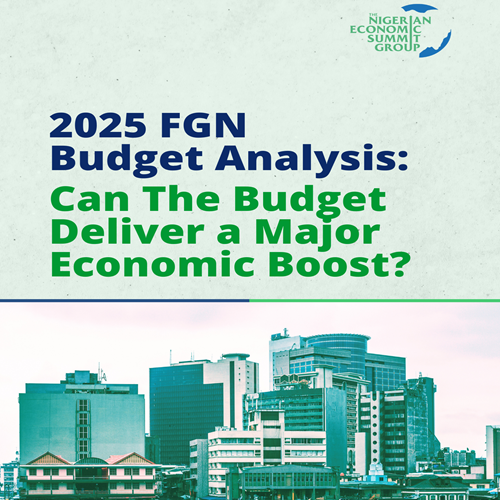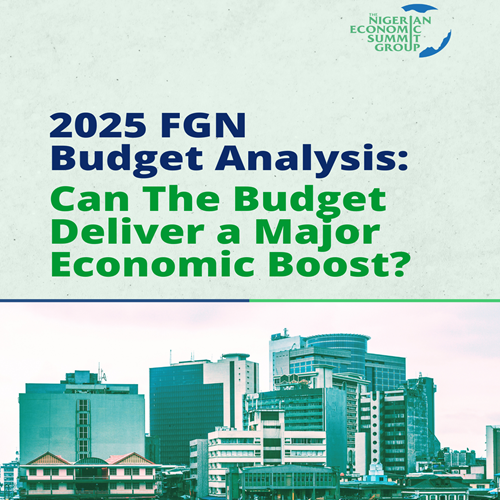Posted Thu, Jun 10, 2021 5:59 AM
Read the 2021 Q1 Economic Report
Real Sector Developments
Nigerian economy consolidates recovery, grew further by 0.5% in 2021 Q1
According to the National Bureau of Statistics (NBS), the Nigerian economy expanded by 0.5% in the first quarter of 2021. This performance represents the second consecutive expansion following the country’s recovery from recession in 2020Q4. It is, however, a slower growth when compared with the real gross domestic product (GDP) growth recorded in 2020Q1 (1.9%). Despite the positive growth trajectory, the current level of economic growth is relatively weak and aligns with the trend observed following the exit of the economy from the previous recession in 2017Q2. In nominal terms, the size of the Nigerian economy in 2021Q1 stood at N40 trillion (US$105.5 billion)1. The gradual improvement in economic activities was largely driven by the non-oil sector, which accounted for 91% of total real GDP. The non-oil sector grew by 0.8% in 2021Q1, representing a slow pace of expansion relative to its performances in 2020Q1 and 2021Q4. The key contributors to the non-oil sector growth in the quarter were the agricultural and industrial sectors, with a combined share of 46% in total real GDP. Similarly, the agricultural and industrial sectors, respectively, contributed 98% and 44% to the overall real GDP growth between 2021Q1 and 2020Q1. However, the oil sector – which accounted for 9% of real GDP - remained in contraction territory at –2.2% in 2021Q1. This poor performance could be attributed to a sharp fall in crude oil production to 1.7 million barrels per day in 2021Q1 from 2 million barrels per day in 2020Q1; thus, reflecting mainly improved compliance of Nigeria with its OPEC’s output quota Amid several socio-economic challenges, particularly the high rate of insecurity in the major food-producing regions, the agricultural sector maintained its positive growth trajectory into 2021Q1. The sector expanded by 2.3% in the quarter, representing an improvement relative to 2.2% in 2020Q1. This performance was driven by the accelerated growth in fishing and livestock sub-sectors in 2021Q1 relative to 2020Q1. The industrial sector also witnessed a rebound, and posted a growth of 0.9% in 2021Q1; though relatively slower than the sector’s growth of 2.3% in 2020Q1. Nonetheless, the recovery of the industrial sector was largely buoyed by the significant improvement in manufacturing activities in 2021Q1. The manufacturing sector largely benefitted from strong growth recorded in key activities including cement and food & beverages sub-sectors. However, the Services sector, which has been hard-hit by the COVID-19 crisis since 2020Q2, contracted by -0.4% in 2021Q1, compared with a growth of 1.6% in 2020Q1. The reversal to a negative growth path in 2021Q1 could be attributed to a significant slowdown in the ICT sector, as well as, a contraction in transport, accommodation and food services, trade and finance sectors.
Inflation continued to surge amidst rising levels of insecurity
Despite the re-opening of the country’s land borders in December 2020, inflationary pressures remained elevated going into the year 2021. The upward trend in inflation could be largely due to the increasing spate of insecurity in the Northern region – Nigeria’s food basket. In March 2021, the headline inflation reached a four-year high of 18.2%. Higher food prices largely caused the continuous rise in inflation. Accordingly, food inflation peaked at a 16-year high of 23% in March 2021. Core inflation also stood high at 12.7% in March 2021, due to other inflation stocking factors, such as, electricity tariff hike, fuel price increase, high transport and logistic costs and continued implementation of VAT increase. Although relatively high, both headline and food inflation moderated to 18.1% and 22.7% in April 2021. Meanwhile, the core inflation stood flat at 12.7% in the same month.
The rising scourge of unemployment and poverty is reflected in youth restiveness and social unrest
Nigeria’s economic growth trajectory is better described as jobless and less inclusive even in the heydays of high growth regime in the 2000s. While the Nigerian economy recovered from recession in 2020Q4, unemployment rate spiked to its highest level ever at 33.3% in the same quarter. With the COVID-19 crisis heightening the rate of joblessness, many Nigerians are expected to fall into the poverty trap, going forward. The World Bank estimated an increase in the number of poor Nigerians to 90 million in 2020 from 83 million in 2019; this corresponds to a rise in headcount poverty ratio to 44.1% in 2020 from 40.1% in 2019. The rising levels of unemployment and poverty are reflected in the persistent insecurity and social vices, with attendant huge economic costs.
Download the document to learn more
Find a blog post
Latest Releases

2025 FGN Budget Analysis: Can Th .. Read
1 day ago

2025 FGN Budget Analysis: Can Th .. Read
1 day ago

Industrial Policy Commission Gen .. Read
2 weeks from now
